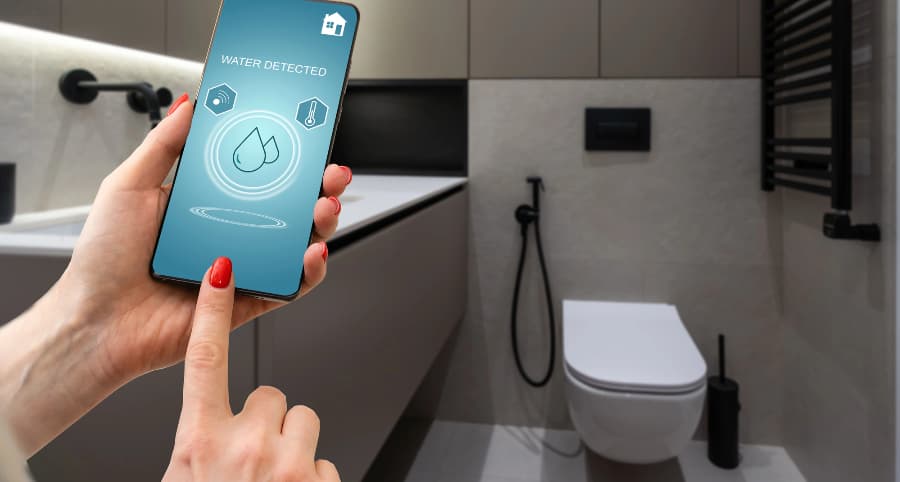How does a water sensor work and why connect one to your Manhattan smart home?

One tiny leak at your house can cause major problems and thousands of dollars in damage. You have to protect against this threat; fortunately, there’s a straightforward way to do so. A water sensor is an effective, simple, and economical solution. Learn how they work and why you ought to integrate water sensors into your Manhattan smart home.
How water sensors shield Manhattan homes
Water enters homes in many ways, whether from a broken appliance, plumbing issue, storm-related event, or human error. However it takes place, you have to know immediately, and this is where water sensors come in. But how exactly do they work?
Many water sensors are conductive and work with a pair of electrodes. When water comes in contact with the electrodes, an electrical link is formed, setting off your alarm. You’ll also discover capacitive sensors that give off an electrical field. When water contacts the conductive areas of these devices, the field is broken, and your alarm triggers. Optical sensors utilizing infrared LED light are an additional choice.
Get more from your water sensor
A few innovative water sensors give you even more defense as they feature built-in temperature sensors. This is an outstanding benefit in preventing pipe freezing. If there’s a drastic decrease in temperature, you’ll find out at once. Taking action before pipes burst will save you from water damage and expensive repairs.
Why integrate water sensors into your Manhattan smart home?
When water issues happen, you have to be alerted immediately. You can achieve this aim by integrating water sensors into your smart home. Whether you’re on site to hear the alarm or away, you’ll get an instant notification on your smartphone. As an additional backup, your round-the-clock monitoring team will be alerted. Every second is critical in a water emergency to limit the destruction and disruption to your family.
Where should you install water sensors?
Any area at risk of water infiltration is a suitable position for water sensors. Put them in these areas:
- Bathrooms: Place near bathtubs or in back of toilets.
- Basements: Water commonly seeps into lower floors via cracked walls or as a result of excessive rain or faulty sump pumps.
- Near water heaters or appliances: Any water-connected appliance may leak in time.
- Underneath sinks: Water sensors are great for discovering pipe leaks in place hidden from view.
- Attics: Detect roof leaks early and prevent costly repairs.
Install water sensors with your Vivint smart home
Give your residence the robust protection it deserves with innovative tools from Vivint. Our water sensors in Manhattan connect to your Vivint smartphone app to send you immediate updates when your alarm is triggered. You also get built-in temperature sensors to prevent frozen pipes. Explore the smart home devices available in Manhattan by reaching out to (332) 208-9869 today.
